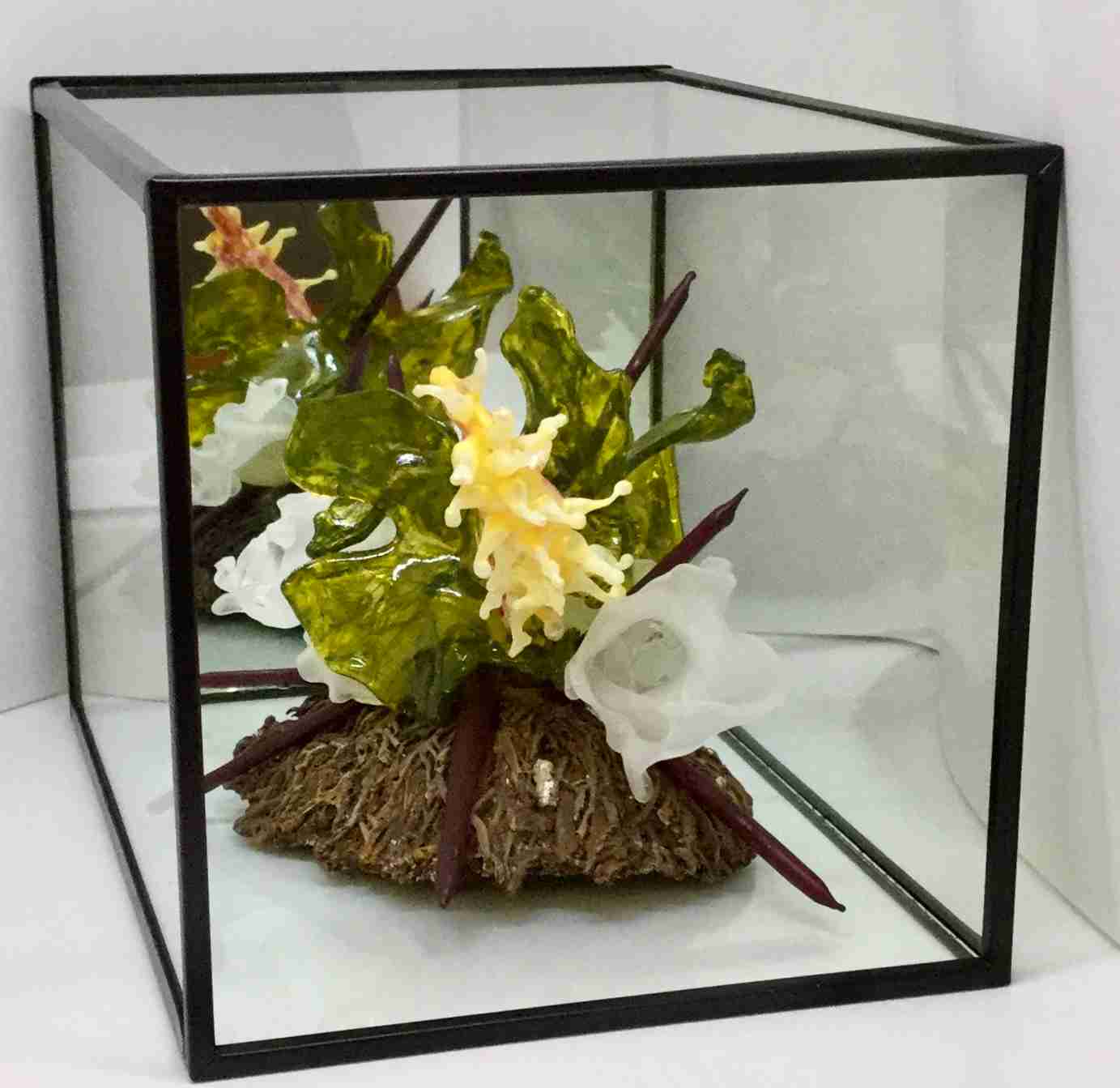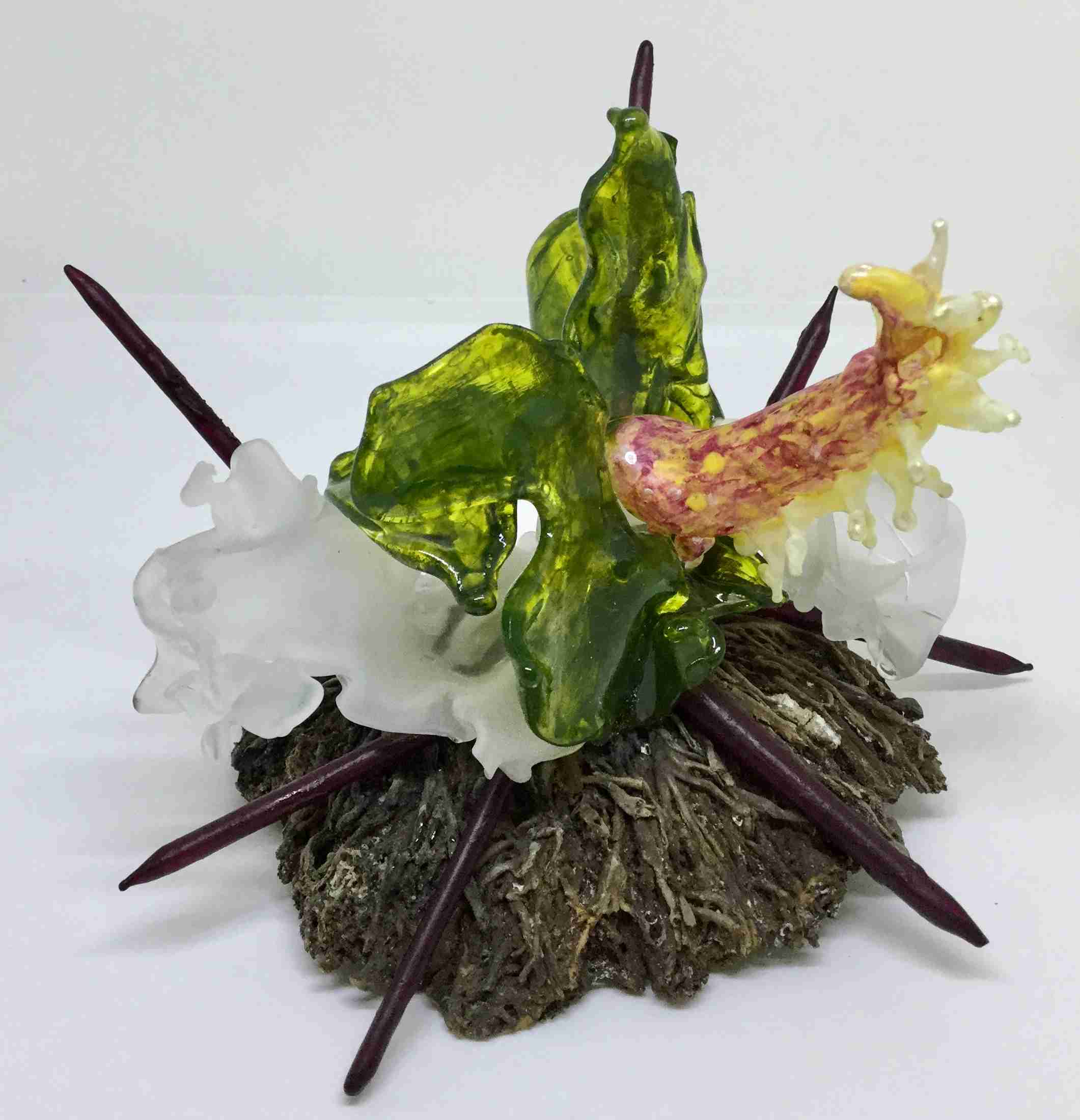The whirlwind of data and opinion surrounding climate change can be overwhelming; how do we form something meaningful and informative out of all of the figures, news, opinions and anxiety surrounding this topic?
Art connects us to the problem in a felt way, it encourages engagement, deep thinking, problem-solving and questioning.
The title of this exhibition (1.5 Degrees) comes from the challenge of the global community to limit global warming to 1.5 degrees (above pre-industrial levels). It is about the science of climate change, communicated in diverse and intriguing ways.
17 Artist from across Australia explore our relationship to the planet, through explorations of the juncture between science and art, and the very human response to the looming threat of climate change.
CURATOR NOTES | Autumn Tansey – Guest Curator (ABOUT) | ABOUT ART AVISO
Skunk Control Event and tickets
HELENE BOYER - Diminished by Degrees
390
Local marine ecosystems face multidimensional threats from increasing acidification and warming of our oceans, encouraging invasive species to flourish and resulting in profound implications for the economic and social systems that depend upon them. The surface waters off the east coast of Tasmania have warmed by approximately 2°C over the past 60 years. This is two to three times the global rate. It can be the smaller, less obvious creatures and plants that have a major impact on degradation of our local marine worlds and are usually only brought to general public notice when they affect the economies of agriculture or fishing. Tasmania’s Giant Kelp forests have been bleached and then diminished by 95% in past decades due to higher sea temps and has seen them listed by the Australian Government as an endangered marine community. The tropical Long-Spined Sea Urchin feeds on marine algae, depriving other species of food and habitat and breeds more successfully in warming waters. We are on the verge of a population explosion that will see this invader cause lifeless ‘barrens’ in the biodiverse reef habitats across large areas of Tasmania’s east coast. The poisonous and voracious introduced predator the North Pacific Sea Star’s breeding rate is also controlled by sea temperature. The disruption of marine ecosystems in the Australian region due to global warming is likely to be greatest in our temperate waters, with the greatest warming off south-east Australia in the Tasman Sea; this area is a global ‘hotspot’.
Artist Statement:
Based in Launceston Tasmania, I am a chiefly self-taught glass artist and sculptor who utilises forms drawn from nature to comment upon contemporary themes. I am inspired by the vigour and fecundity of the diverse and extraordinary botanical forms to be found in the marine and terrestrial environments of my island home and delight in creating delicate works that celebrate the smaller things. I love the potential of glass to exploit transparency, colour and light and to be simultaneously fragile and robust. Soda lime and borosilicate glass rods and tubes are manipulated in the flame of my torch and then I add additional colour or texture to the glass surface through sandblasting, painting or pencil before assembling sculptural components. I often capture the botanical sculptures under glass like the scientific specimen displays of the 19th century, sometimes creating quasi scientific names for imagined forms. I was a finalist in the Bay of Fires Art Award and the sculpture award Artentwine in 2018 and a finalist in the Tom Bass Prize 2020.
PRICE: $390
ART AVISO PROFILE

